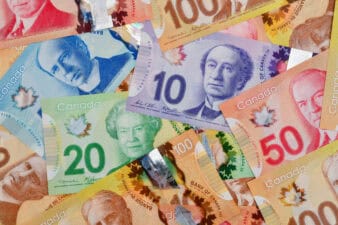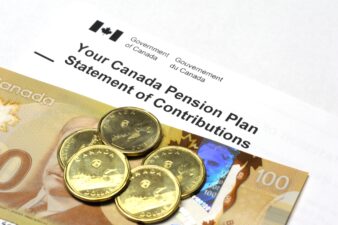As the banking market leader in Canada, Royal Bank of Canada (TSX:RY)(NYSE:RY) has fared well in the face of a crumbling Canadian economy. The TSX has fallen 15% in the past six months, but Royal Bank shares have only lost 8%.
What’s helped Royal Bank shares buck the trend, and can investors hope to profit in 2016?
Bigger is better
The 2008 U.S. financial crisis, while more dire (for now) than the current Canadian crisis, is good reminder that it’s typically better to be big when operating in the financial sector. Bigger banks usually have closer relationships with the government, get access to lower cost sources of capital, and can more easily diversify themselves across asset classes and geographies. As the largest bank in Canada and one of the top 15 banks in the world, Royal Bank seems to fit this bill.
Because of its size, Royal Bank is able to garner revenues from dozens of sources. While most smaller banks are completely dependent on traditional banking services, these activities only comprise 52% of Royal Bank’s business. Another 11% comes from wealth management, 7% from insurance, 6% from treasury services, and 24% from investment banking. Diversifying sales to this extent is something many other Canadian banks are unable to do.
By geography, Royal Bank isn’t completely reliant on Canada. About 12% of revenues come from the U.S., with another 13% from a variety of international countries. While Royal Bank is still mostly dependent on its domestic market, having roughly 25% of sales being generated abroad reduces volatility significantly, especially in today’s market.
The growing dividend is sustainable
So, we’ve determined that Royal Bank’s business is less risky than many of its peers that are less diversified. But what if the troubles in Canada’s energy-focused provinces such as Alberta spill over into the rest of the economy? Fortunately, Royal Bank’s 4.5% dividend is sustainable even through tough times, while paying you to wait should things not be as rosy this year.
As of today, Royal Bank’s credit ratings are some of the highest available globally. The strength of its leverage and liquidity ratios are also near the top of the industry. Plus, as of last quarter, the dividend payment only comprises 45% of earnings, meaning profits would need to drop by over 50% for the payout to be in danger. Management has made the dividend a priority, and its financial banking should mean that investors can count on it, even if the economy continues to sour.
Is the market throwing banks out with the bathwater?
While Royal Bank has outperformed the market over the past three to 12 months, returns have still be negative. Mostly, investors have been worried about Canada’s flagging energy sector. However, the economy is still strong and growing in the majority of areas that Royal Bank serves.
For example, the labour market is expected to continue improving overall, despite energy layoffs. The unemployment rate is expected to resume a modest downward trend through 2016.
Additional tailwinds include a strengthening U.S. economy (Canada’s biggest trade partner) and a weakening domestic currency (which can actually spur manufacturing and exports). For 2016, Royal Bank is anticipating GDP growth of 2.2%. While that’s nothing to write home about, it certainly doesn’t imply an impending implosion of Canada’s biggest banks.
If you’re interested in maintaining exposure to the financial sector while mitigating some of your biggest risks, consider Royal Bank of Canada.







